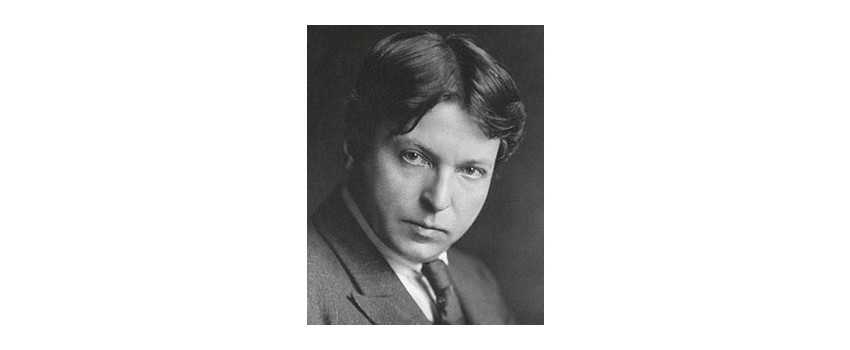Enesco, Concertpiece For Viola And Piano (IMC)
This piece in the Romantic style was first published in 1906.
George Enescu (19 August 1881 – 4 May 1955), known in France as Georges Enesco, was a Romanian composer, violinist, conductor, and teacher. Regarded as one of the most excellent musicians in Romanian history, Enescu is featured on the Romanian five lei. Enescu was born in Romania, in the village of Liveni (later renamed "George Enescu" in his honor), then in Dorohoi County, today Botoșani County. His father was Costache Enescu, a landholder, and his mother was Maria Enescu (née Cosmovici), the daughter of an Orthodox priest. Their eighth child was born after all the other siblings had perished in infancy. His father later separated from Maria Enescu and had another son with Maria Ferdinand-Sushi: the painter Dumitru Bâșcu.
A child prodigy, Enescu began experimenting with composing at an early age. Several pieces survive, mostly very short, for violin and piano. The earliest work of significant length bears the title Pămînt românesc ("Romanian Land") ("Romanian Land"). It is inscribed "opus for piano and violin by George Enescu, Romanian composer, aged five years and a quarter." Shortly after that, his father presented him to the professor and composer Eduard Cardella. On 5 October 1888, at the age of seven, he became the youngest student ever admitted to the Vienna Conservatory, where he studied with Joseph Hellmesberger Jr., Robert Fuchs, and Sigismund Bachrach. He was the second person admitted to the Vienna Conservatory by a dispensation of age and was the first non-Austrian.
In 1891, the ten-year-old Enescu gave a private concert at the Court of Vienna in the presence of Emperor Franz Joseph. Joseph Hellmesberger Sr., one of his professors and the director of the Vienna Conservatory, welcomed Enescu at his house, where the kid prodigy met his hero, Johannes Brahms. He graduated at the age of 12, getting the silver medal. In his Viennese recitals, young Enescu performed compositions by Brahms, Sarasate, and Mendelssohn. Then, in 1895, he traveled to Paris to pursue his studies. He studied violin under Martin Pierre Marsick, harmony with André Gedalge, and composition with Jules Massenet and Gabriel Fauré.
Enescu then studied from 1895 to 1899 at the Conservatoire de Paris. André Gedalge said that he was "the only one who truly had ideas and spirit." Pablo Casals described Enescu as "the greatest musical phenomenon since Mozart" and "one of the greatest geniuses of modern music." In her memoirs, Queen Marie of Romania wrote that "in George, Enescu was real gold." Yehudi Menuhin, Enescu's most famous pupil, once said about his teacher: "He will remain for me the absoluteness through which I judge others," and "Enescu gave me the light that has guided my entire existence." He also considered Enescu "the most extraordinary human being, the greatest musician and the most formative influence" he had ever experienced. Vincent d'Indy believed that if Beethoven's compositions were lost, they might be entirely rebuilt from memory by George Enescu. One of the greatest pianists, Alfred Cortot, once stated that Enescu, while essentially a violinist, had superior piano technique than his own.
Enescu's only opera, Œdipe (Oedipe), was staged for the first time at the Royal Opera House in London in 2016, 80 years after its Paris premiere, in a production directed and designed by La Fura dels Baus which received excellent reviews in The Guardian, The Independent, The Times and other publications. In addition, an examination of Enescu's work and why it is less recognized in the UK was written by musician Dominic Saunders in The Guardian. Near Moines, there is a home from Toscani, granted by Enescu's widow to the Romanian state, providing that a cultural center be established there. Livni is the home where the composer grew up. In addition, there is a George Enescu memorial house in Sinaia (Villa Luminiș, Cumpatul district). In the home in Toscani, Bacău (the "Rosetti-Tescanu Cultural Center"), the Romanian state built a creative center in the 80s, where literary works were written (Jurnalul de la Toscani, Andrei Plesu) during yearly painting and philosophy camps.
Enescu's maternal grandfather's home in Mihăileni, where Enescu spent part of his youth, had degraded to an advanced degree of disrepair by 2014. In August 2014, it was salvaged from destruction by a team of volunteer architects. Eugène Ysaÿe's Solo Violin Sonata No. 3 "Ballade" was dedicated to Enescu.

This piece in the Romantic style was first published in 1906.